
Clive Barker is an English playwright, author, film director, and visual artist. Barker came to prominence in the mid-1980s with a series of short stories, the Books of Blood, which established him as a leading horror writer. He has since written many novels and other works, and his fiction has been adapted into films, notably the Hellraiser series, the first installment of which he also wrote and directed, and the Candyman series. Barker also serves as an executive producer on the film Gods and Monsters, which won an Academy Award for Best Adapted Screenplay.

Richard Burton Matheson was an American author and screenwriter, primarily in the fantasy, horror, and science fiction genres.

Werewolf fiction denotes the portrayal of werewolves and other shapeshifting man/woman-beasts, in the media of literature, drama, film, games and music. Werewolf literature includes folklore, legend, saga, fairy tales, Gothic and horror fiction, fantasy fiction and poetry. Such stories may be supernatural, symbolic or allegorical. A classic American cinematic example of the theme is The Wolf Man (1941) which in later films joins with the Frankenstein Monster and Count Dracula as one of the three famous icons of modern day horror. However, werewolf fiction is an exceptionally diverse genre, with ancient folkloric roots and manifold modern re-interpretations.

William Peter Blatty was an American writer, director and producer. He is best known for his 1971 novel The Exorcist, for which he won the Academy Award for the screenplay of its film adaptation and was nominated for Best Picture as its producer. The film also earned Blatty the Golden Globe Award for Best Motion Picture – Drama as producer. He also wrote and directed the sequel The Exorcist III.

Terence Fisher was a British film director best known for his work for Hammer Films.
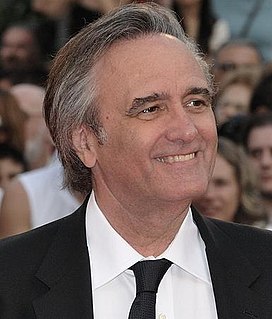
Joseph James Dante Jr. is an American film director, producer, editor and actor. His films—notably Gremlins (1984)—often mix 1950s style b-movies with cartoon comedy.
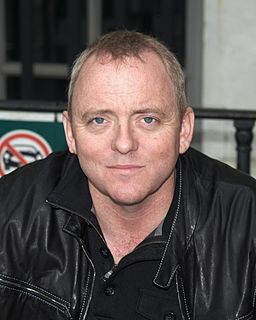
Dennis Lehane is an American author. He has published more than a dozen novels; the first several were a series of mysteries featuring a couple of protagonists and other recurring characters, including A Drink Before the War. Of these, four were adapted as films of the same name: 2003's Mystic River, directed by Clint Eastwood, which won several awards; 2007's Gone Baby Gone; 2010's Shutter Island directed by Martin Scorsese and 2016’s Live by Night directed by Ben Affleck.

The Howling is a 1981 American horror film directed by Joe Dante and starring Dee Wallace, Patrick Macnee, Dennis Dugan, and Robert Picardo. Based on the novel of the same name by Gary Brandner, the film follows a television newswoman sent to a remote mountain resort after a near-fatal incident with a serial killer, unaware that the resort's residents are werewolves.

The Curse of the Werewolf is a 1961 British horror film based on the novel The Werewolf of Paris by Guy Endore. The film was made by the British company Hammer Film Productions and was shot at Bray Studios on sets that were constructed for the proposed Spanish inquisition themed The Rape of Sabena, a film that was shelved when the BBFC objected to the script. While the original story took place in Paris, the location of the film was moved to Madrid to avoid building new Parisian sets. The leading part of the werewolf was Oliver Reed's first starring role in a film and composer Benjamin Frankel's score is notable for its use of twelve-tone serialism, rare in film music. It was also the first werewolf film to be shot in color.

Howling III is a 1987 Australian horror sequel to The Howling, directed by Philippe Mora and filmed on location in and around Sydney, Australia. Starring Barry Otto, Imogen Annesley and Max Fairchild, Howling III is the only PG-13 rated entry in the Howling film series and also the last film in the series to be released theatrically. In this sequel, werewolves have evolved, with females having marsupial-like pouches to nurse their young. Scientists attempt to study them, while soldiers try to track and kill them in the Australian Outback.

Howling II: Your Sister Is a Werewolf is a 1985 American horror film directed by Philippe Mora and direct sequel to the 1981 film The Howling. The film stars horror film veteran Christopher Lee along with Reb Brown and Annie McEnroe as they try to defeat Sybil Danning's werewolf queen Stirba and stop a werewolf group's plans to conquer the world. Although Gary Brandner, author of The Howling novels, co-wrote the screenplay, the Howling II: Your Sister Is a Werewolf is largely unrelated to his 1979 novel The Howling II.
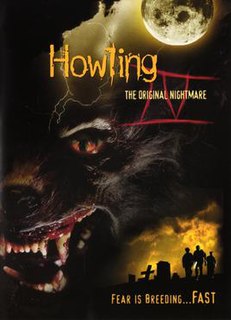
Howling IV: The Original Nightmare is a 1988 direct-to-video horror film directed by John Hough from a screenplay by Freddie Rowe and Clive Turner. Starring Romy Windsor, Michael T. Weiss, Antony Hamilton, Susanne Severeid and Lamya Derval. The Original Nightmare is the fourth entry in the series of seven standalone films with loose continuity and is not so much a sequel but rather a more faithful adaptation of Gary Brandner's source novel The Howling (1977).

Howling VI: The Freaks is a 1991 direct-to-video horror directed by Hope Perello, from the screenplay by Kevin Rock, starring Brendan Hughes, Bruce Payne, Michele Matheson, Sean Gregory Sullivan, and Carol Lynley. "The Freaks" is the sixth entry in the series of seven standalone films with a loose continuity. Like most of the other films, the film is loosely based on The Howling series of novels by Gary Brandner; however, minor elements from the third novel, The Howling III: Echoes, are in the film, which includes the solitary drifter who is cursed as a sympathetic werewolf and later recruited by a supernatural being, as well as werewolves being used in carnival freak shows.

The Werewolf of Fever Swamp is the fourteenth book in the original Goosebumps, the series of children's horror fiction novellas created and authored by R. L. Stine. The story follows Grady Tucker, who moves into a new house next to the Fever Swamp with his family. After a swamp deer is killed, his father believes Grady's dog is responsible, but Grady is convinced a werewolf is the culprit.

The Howling is a 1977 horror novel by Gary Brandner. It was the inspiration for the movie The Howling (1981), although the plot of the movie was only vaguely similar to that of the book.

The Howling II is a 1979 horror novel by Gary Brandner. It is the first of two sequels to his 1977 werewolf novel, The Howling. The novel was later republished under the alternative titles The Howling II: The Return and Return of the Howling.
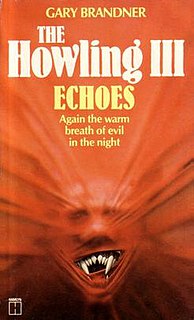
The Howling III: Echoes is a 1985 horror novel by the American author Gary Brandner. It is the third and final entry in his Howling series of novels. Like its predecessor, The Howling II, the book has not been adapted for the screen and bears virtually no similarity to the Howling III film or any of the other films in The Howling series. Minor elements of the novel were used in the film Howling VI: The Freaks, though this idea was actually first seen in the 1975 British horror film Legend of the Werewolf.

Scott Eric Neustadter is an American screenwriter and producer. He often works with his writing partner, Michael H. Weber. The two writers wrote the original screenplays for 500 Days of Summer and The Pink Panther 2. 500 Days of Summer is based on two real relationships Neustadter had. They also wrote the screenplays for The Spectacular Now, based on the novel by Tim Tharp, The Fault in Our Stars, based on the best-selling novel by John Green, and Paper Towns, based on another novel by Green.

The Howling: Reborn is a 2011 teen horror film directed by Joe Nimziki and starring Lindsey Shaw, Landon Liboiron and Ivana Miličević. It is the eighth film and a reboot of The Howling film series. The film was released on DVD on October 18, 2011.
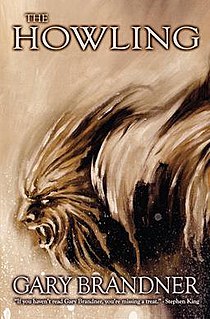
The Howling is an American werewolf-themed horror media franchise that includes three novels and eight films. The series began with the 1977 horror novel The Howling by Gary Brandner, which was in 1981 adapted into the film of the same name, directed by Joe Dante.




















